Mention Peppa Pig or Cocomelon to a parent of young children and they might break out in a cold sweat.
But the near-obsessive excitement that younger viewers have in these shows has helped to turn them – and many others – into hugely lucrative businesses.
They're cartoons – what makes them so lucrative?
We need your consent to load this rte-player contentWe use rte-player to manage extra content that can set cookies on your device and collect data about your activity. Please review their details and accept them to load the content.Manage Preferences
When a cartoon is a hit, it doesn’t stay confined to the TV for long.
As anyone who has been in the general proximity of a child will tell you, once they get into a show, it can take over their lives.
What they’re watching on the screen quickly extends to toys, t-shirts, colouring books and magazines, books, films and video games.
All the way to live stage shows – and even theme parks.
So while there are tonnes of kids shows out there that might end up being fairly popular, the handful that break through to being big, global hits can quickly turn into little business empires.
What kind of money are we talking about?
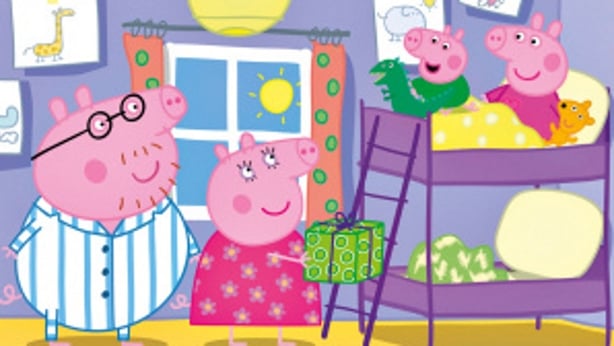
In many cases it’s hard to get solid figures – a single cartoon might be just one of many in a studio’s stable. Or there are multiple companies involved, all getting a little piece of the various revenue streams.
Either way, though, it’s safe to say that - at the top end of the market - you’re talking about billions being spent each year on kids cartoons and all the connected paraphernalia.
Take Peppa Pig for example. That’s a cartoon that’s been popular around the world for nearly 20 years now.
By 2019 it’s estimated to have been generating $1.3 billion in revenue around the world in one year – through licensing of the show itself, sales of toys and merchandise, and attractions around the world.
That includes a Peppa Pig Theme Park in Florida, two Peppa Pig Lands in Europe, and five Peppa Pig Worlds; including one in England, two in the US and two in China.
Is Peppa Pig big in China?
Yes, Chinese audiences seem to love Peppa Pig – or Pei Pei Zhu, as she’s known there.
It only launched in that market in 2015 but within four years had gotten 60 billion views on Chinese streaming services, and sold 40 million books in Mandarin.
And next year is due to see the opening of the first Peppa Pig Resort in the world in the Sichuan province of China.
That will be complete with a Peppa Pig Theme Park, a Peppa Pig Hotel, and an aquarium.
What other cartoons have become big business?
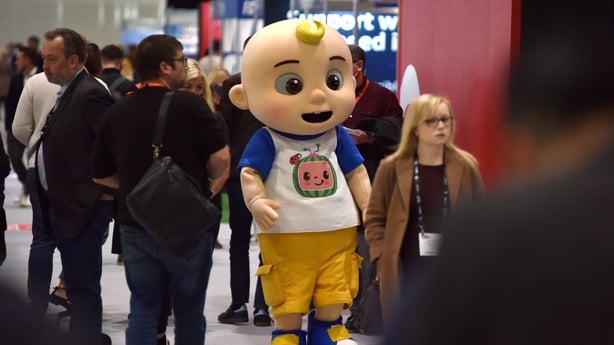
Cocomelon is a name that will send a shiver down the spine of any parent listening.
It’s a cartoon that’s based around teaching numbers and the alphabet, usually using old nursery rhymes. And it has this unsettling 3D animated family, and really quick cuts from one shot to another – which is a big part of what makes it so attractive to kids.
But while people will probably know it from being on Netflix, Cocomelon actually debuted as a YouTube channel in 2006.
It took the best part of a decade before it really broke through into the mainstream, and it’s only been in the past three or so years that it’s been available on the likes of Netflix, and it’s started to churn out side-products like merchandise.
But you can see just how popular it is by looking at that YouTube channel.
It hit one million subscribers back in the middle of 2016… today it has 162 million subscribers.
And all of its videos have many millions of views – though many of those views are likely due to individual viewers watching on repeat.
Many of its videos have even passed the billion view mark – as of today there are 29 videos on its channel with more than a billion views, with one racking up 6.2 billion views since it was published five years ago.
That means that it’s generating millions of dollars in revenue from YouTube alone each year – before you get into merchandise and TV sales.
And the company behind it recently agreed a deal with Netflix for a number of spin-off shows – with some in the industry suggesting that that deal may have been worth more than $100m.
Are there any that have managed to appeal to parents, too?
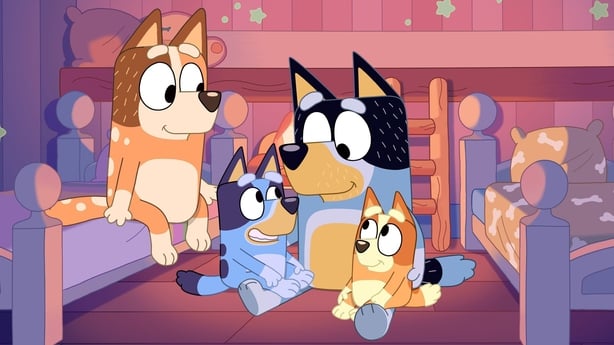
Yes, the last few years has also seen an explosion in popularity around Bluey – an Australian cartoon about a dog, called Bluey, and her family.
It debuted in Australia in 2018, and Disney picked up the international rights to it in 2019.
It’s a short and quite gentle show – it doesn’t irritate like others – and it usually has a few little nods and winks thrown in there for parents too.
And that formula has catapulted it from relative obscurity a few years ago to a global sensation today.
There was one week in August of last year when it was apparently the most-watched children’s show on Disney Plus in the US – beating out all of Disney’s own very-well-known content.
When it first reached Irish shores in 2020 there wasn’t really any toys or merchandise available - but now some toy shops have entire aisles dedicated to it.
There are also books and t-shirts, and even a live show which is going to do 16 shows in Ireland next year.
And, of course, that translates to big money.
The year after it secured the contract to make Bluey toys, Australian firm Moose Toys saw its revenues jump by around 25% to AUS$800m. Which it entirely attributed to Bluey.
The resulting bump it gave to Moose Toys’ valuation even helped to push its owners significantly higher in Australia’s rich list.
Manny Stul and his family’s estimated worth doubled to AUS$1.6 billion - pushing them from 119th in 2020, to 69th a year later.
How are the BBC a beneficiary of the so-called Bluey bump?
BBC Studios, the commercial production arm of the BBC, secured the global commercial rights to Bluey while it was in development in 2017 – which has proven to be a very smart move.
It even singled the cartoon out as one of the reasons for its 50% jump in profits last year.
That seems to be a bit of a sore point in Australia, too; there’s a piece in the Australian Financial Review called 'How the Brits stole the rights to Bluey’, which bemoans the fact that its own national broadcaster, ABC, doesn’t really profit from the show – despite being where it was originally developed.
But while Bluey is making serious money – and its pull is growing by the month – it still has a long way to go before it’s top of the pile in terms of earnings.
So, who is the biggest earner when it comes to cartoons?
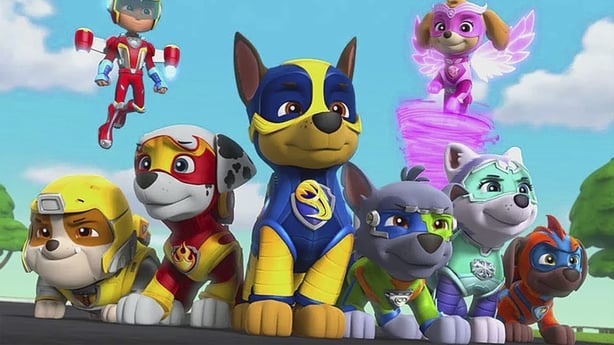
It seems as though Paw Patrol is by far the biggest earner in the kids cartoon space.
The owner of the brand – Spin Master Entertainment – had revenues of more than $2 billion last year.
It made an operating profit of more than $343 million last year alone.
Now not all of that is from Paw Patrol – but a huge proportion of it is.
For those who’ve managed to miss out on the phenomenon, Paw Patrol is about a group of pups that essentially act as the emergency services of a small town called Adventure Bay.
It’s about to mark its 10th anniversary, and in that time the studio behind it has churned out 231 episodes across nine seasons.
It, of course, has the wide array of toys, books, branded bikes and accessories, and clothes. As well as the numerous theme parks and attractions and video games
Last year its revenue was particularly helped by its first big screen adaptation, with a second film due to release in September, and a spin-off series also in production.
And what’s interesting about the company behind it – Spin Master – it’s a toy company.
They had the prototype of a toy first and decided to try to build a TV show around that, in order to help it sell.
Starting with the toy and then developing a show – is that a bit of an unusual approach?
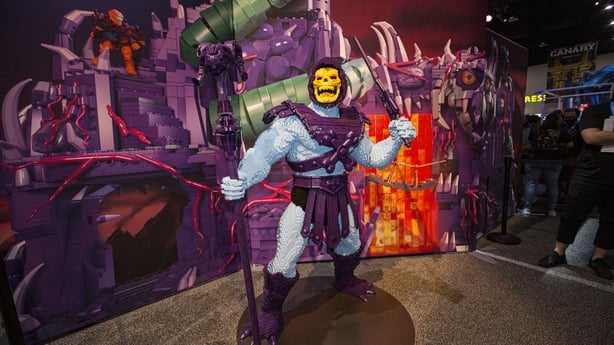
No, actually, it’s happened a lot in the past.
This may ruin some childhoods – but there have been loads of hugely popular kids cartoons that were launched by toy companies, all built around the idea that if you make a show that’s popular with kids, it will essentially become a big advert for the toys you’re making too.
And this was really common in the 80s and 90s.
Transformers, GI Joe and My Little Pony, for example, were all developed by Hasbro.
Masters of the Universe – which He-Man and She-Ra were a part of – was made by Mattel.
They did that after declining the offer of producing Star Wars toys – which obviously turned out to be a huge mistake.
Mattel have continued this ‘multimedia’ approach to this day – they make the Monster High dolls, which they have promoted through a YouTube channel, and latterly some TV and film specials that have appeared on the likes of Netflix and Amazon Prime.
And that link between cartoons and toy-makers has evolved in other ways.
In 2019, for example, Hasbro, acquired Entertainment One – the company behind Peppa Pig – for almost $4 billion.
It also acquired an Irish animator, Boulder Media, at one stage – and they would have been helping to make My Little Pony cartoons, for example, though it has since sold that business on to an Australian company called Princess Pictures.
But the appeal is clear.
Because owning an animation arm allows the likes of Hasbro to make their own cartoons, which can work as adverts for their new line of toys.
And, vice versa, if they have a new line of toys that prove to be a hit, and they want to have a spin off cartoon based around them, they no longer need to sell the rights on to a third party – they can just make it in house.
Do others benefit from big hit cartoons like these?
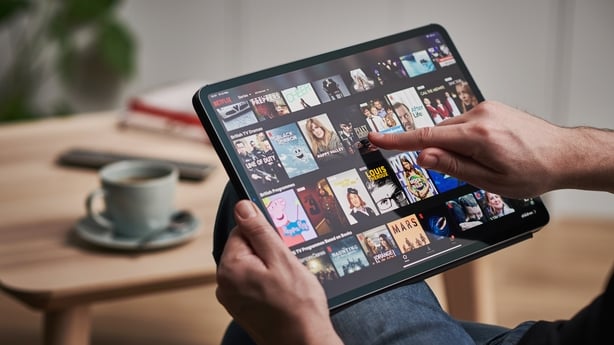
Absolutely – aside from Moose Toys and BBC Studios, there are plenty of others that make money off a successful cartoon - not least the streaming platforms.
Because getting a hit kids TV shows onto your platform is one really good way of making your subscription ‘stickier’.
There are many families out there that have said ‘I would cancel X subscription, but it has that show that the kids love, so it’s not worth losing’.
Netflix is said to have targeted $1.7 billion of its content spending towards kids content in 2021.
Some of that would have been to help secure the rights to shows like Paw Patrol or Cocomelon – but some would also have been aimed at trying to create a hit of their own.
Karma’s World and Ridley Jones are examples of kids shows that Netflix has commissioned in recent years.
It’s not the only one to try this, either. Apple TV has also tried to make its own hits – like Get Rolling with Otis.
And those three cartoons are a good example of the other kinds of beneficiaries, because they’re all made by Brown Bag Studios in Dublin.







